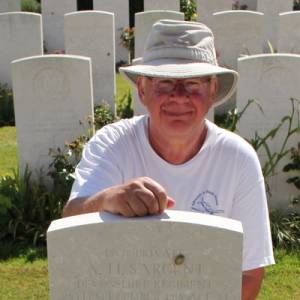A truly remarkable story...
We crossed the Cam today over the Cutter Ferry Bridge to visit one of the most remarkable, if largely unknown monuments in Cambridge. This is a fairly long read but hopefully many of you will be as amazed by this story as I was when I first came across it.
Four-year-old Anna Maria Vassa, who died in 1797, was the orphaned daughter of a Cambridgeshire woman and Olaudah Equiano, a former slave and sailor who bought his freedom. This memorial on the outside of St Andrew’s Church in Chesterton, Cambridge pays tribute to the young girl - who is believed to be buried in the grounds - with a poem.
Anna Maria’s father was the best known Black man in eighteenth-century Britain. His 1789 autobiography The Interesting Narrative of Olaudah Equiano: or Gustavus Vassa, the African details his kidnapping and torturous passage from Nigeria to the Caribbean, providing first-hand evidence to fuel the abolitionist movement.
Still in print today, it tells how he was sold between seafaring slavers, before earning enough money from trading to buy his freedom in 1766 and settle in England. In London, he was a leading member of The Sons of Africa, a small group of freed slaves who campaigned to abolish slavery. Through public lectures, newspaper articles and petitions to Parliament the men got their message out to an increasingly receptive audience. Equiano continued to travel around the world, including on an Arctic expedition, and toured Britain promoting his book - which may have brought him to Cambridge, where there was an active abolitionist circle.
However, in 1792 he married Susannah Cullen from Fordham village at St Andrews Church in Soham. There the couple settled and had two daughters: Anna Maria (born October 16 1793) and Joanna (born April 11, 1795). Susannah died in 1796 and Olaudah the following year, leaving the orphaned girls to be brought up by another family in Chesterton. Only Joanna survived to adulthood.
The slave trade was abolished in Britain in 1807 with an Act signed by King George III, to whom Equiano had dedicated his book.
Although the church has burial records dating back to the reign of Henry VIII, they are not 100 per cent accurate, and Anna Maria is not in them. This may be because Equiano was a Methodist Christian, baptised in England, and so his daughter had a non-conformist burial; laid to rest somewhere in the grounds but memorialised on the outside of the church.
Children in the late eighteenth century were not often memorialised. Partly due to the high rates of early childhood mortality (81 per 100,000 in Chesterton in 1851), and the expense of stone engravings. There would probably have been a lot of passing around the hat to provide the funding which reflects the way her death must have been viewed in the community.
“To bury her the village children came. / And dropp’d choice flowers, and lisp’d her early fame;” goes the poem.
It was written by local lawyer and poet Edward Ind, one of the two executors of Equiano’s will, whose family may have looked after the sisters.
https://en.wikipedia.org/wiki/Olaudah_Equiano
- 41
- 0
- Fujifilm X-T3
- 1/417
- f/5.6
- 34mm
- 400

Comments New comments are not currently accepted on this journal.